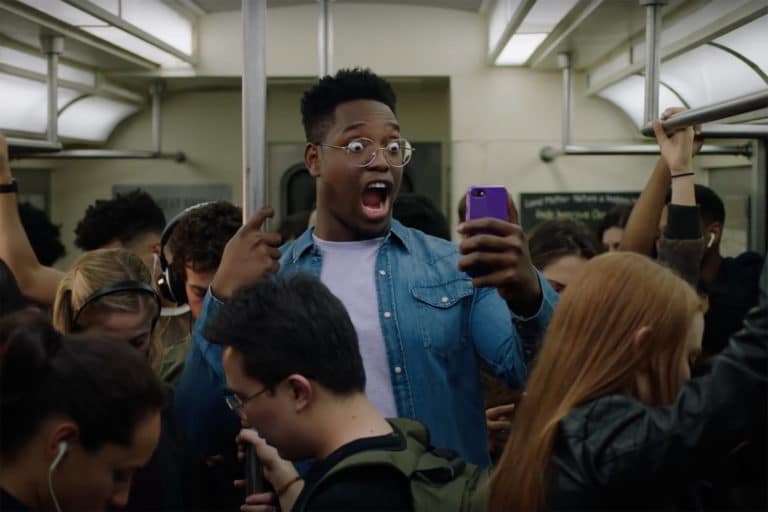
This post is adapted from ARtillery Intelligence’s latest report, Social AR: Spatial Computing’s Network Effect. It includes some of its data and takeaways. More can be previewed here and subscribe for the full report.
Continuing our analysis of social AR, what’s driving it? Among other things, it involves human psychology. Like many technologies, AR extends from and feeds on our inherent need to interact with other humans. So several (not all) successful forms of AR will build on this principle.
“The internet enabled Amazon and it became e-commerce, and e-commerce is a killer app,” said Charlie Fink during a presentation at VRLA last spring. “But the real killer app of all of our devices — of the smartphone in our pocket or the PC on our desk — is to connect us with other people.”
Another historical lesson that can help triangulate AR’s future is the web 2.0 movement circa 2005. It accelerated online value by connecting people. AR thought leader Ori Inbar reminds us that browsing the web before that was a very one-dimensional and isolated experience.
Subsequent to that shift, most successful online players – Facebook, YouTube, Reddit, Slack, etc. – have been built on connecting people. AR will follow a similar path Many of its success stories will have strong social components that tap into our basic need to connect with one another.
Our AR survey with Thrive Analytics also indicates demand for social AR. Beyond activity for current users, we asked the full sample of users and non-users what types of mobile AR experiences they see as most valuable. One-third believe that social AR will be a top use case.

Isolation Reversal
One of AR’s criticisms is that it further isolates an already digitally-distracted culture. Online social media has created a culture that exercises “social” urges through 2D screens. But the counter-argument, at least for AR, is that it raises our gaze up from smartphones that are held down.
Apple CEO Tim Cook addressed this point during an earnings call last year, stating: “I see AR as being profound. I think AR has the ability to amplify human performance instead of isolating humans.” This is telling about what’s driving the company that in turn drives consumer technology.
This “heads up” concept for AR will be inherent in smart glasses, but what about the nearer-term reality of mobile AR? Even there, use cases compel more of an outward focus — holding a phone up instead of down — as the physical world plays a greater role in the content and experience.
“Millennials are statistically going to take 27,500 selfies,” said ARiA lead John Werner at an AR in Action event last spring. “That says something about how they see the world. The next generation may be more Pokémon Go – using technology to look out as opposed to [in].”
This is what we call “isolation reversal” and it’s been espoused by AR thought leaders such as Inbar. He sees it adding societal and altruistic value to AR, thus increasing its consumer appeal. Tapping into this principle can also be a driving factor in AR innovation and product design.
“The reason I got into AR a decade ago is I saw my kids constantly in front of a computer screen or mobile devices,” he said at ARiA. “I felt I can’t change that, but maybe we can extract some things that attract them to those computers and to the internet, and bring it into the real world.”

Ready Player Two
Beyond historical and psychological evidence to support social AR are technological and mathematical factors. Chief among them is network effect. And the father of network effect Bob Metcalfe is a big believer that success in AR will hinge on mechanics of social connection.
“It’s very likely that the killer app will be networked AR,” Metcalfe said from a live video feed at the AR in Action conference last year.” That is, the platform and the standards will very much involve networking, if the birth of personal computing and the internet are any guide.”
As background, Metcalfe invented Ethernet and authored Metcalfe’s Law, which states that networks exponentially grow in value with each node added. For example, social network value utility and connections grow exponentially when you go from one person to two to three and so on.
Metcalfe came up with the law in 1980 which was formalized in 1993. It has since defined local area networks, email, the commercial internet, content networks and eventually social media. Today, it defines lots of technology, including some of the most valuable companies in the world.
“The big app that follows Metcalfe’s law — although they’ve never heard of it — is Facebook,” he said at the same event. “Facebook came from nowhere based on the value of networking and it continues to grow. Their company is booming based on the value of connectivity.”
Back to AR, Metcalfe’s Law will sustain as we evolve from disconnected and isolated experiences of most AR apps today. To turn again to historical evidence, think of navigation: we had GPS, then Google Maps but new dimension was unlocked by connected experiences of Waze.
“There’s been an evolution of killer apps on the internet and I suspect that the same thing is going to happen in AR,” Metcalfe added. “I keep hearing that AR and VR are useful for gaming, and training. Somewhere in there is going to be the killer app and I’m confident it will be networked.”
See more details about this report or continue reading here.
For deeper XR data and intelligence, join ARtillery PRO and subscribe to the free AR Insider Weekly newsletter.
Disclosure: AR Insider has no financial stake in the companies mentioned in this post, nor received payment for its production. Disclosure and ethics policy can be seen here.
Header image credit: Snap, Inc.
